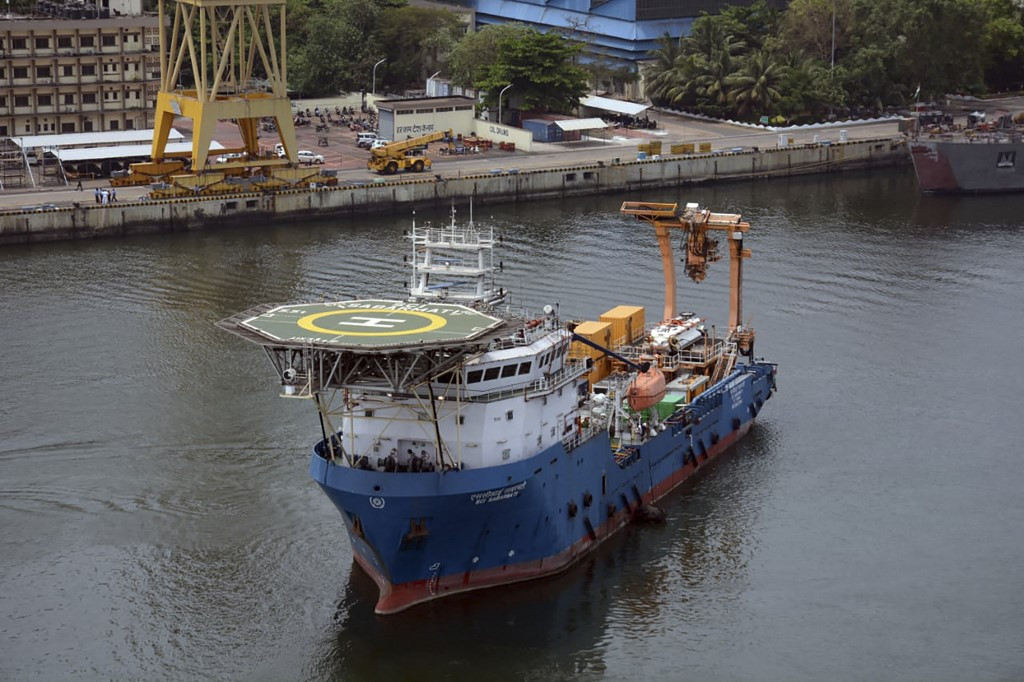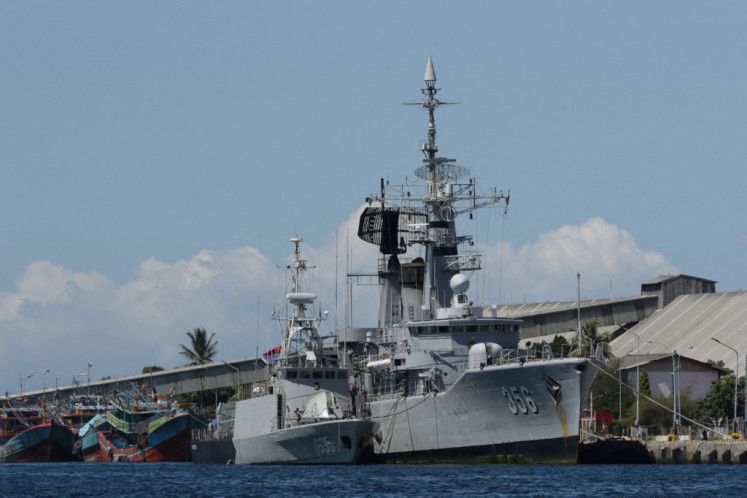Popular Reads
Top Results
Can't find what you're looking for?
View all search resultsPopular Reads
Top Results
Can't find what you're looking for?
View all search resultsFrantic search for missing KRI Nanggala enters third day
More navy ships left a base in Banyuwangi early on Friday to head to the Bali Sea where contact was lost with the KRI Nanggala on Wednesday during a torpedo drill.
Change text size
Gift Premium Articles
to Anyone
 This handout photograph taken on April 22, 2021 and released by the Indian Navy, shows Indian Navy's Deep Submergence Rescue Vessel (DSRV) exiting the Visakhapatnam Port to join in the search for a decades-old Indonesian navy submarine that went missing off the coast of Bali with 53 crew aboard during regular exercises. (AFP/Indian Navy)
This handout photograph taken on April 22, 2021 and released by the Indian Navy, shows Indian Navy's Deep Submergence Rescue Vessel (DSRV) exiting the Visakhapatnam Port to join in the search for a decades-old Indonesian navy submarine that went missing off the coast of Bali with 53 crew aboard during regular exercises. (AFP/Indian Navy)
R
escue aircraft and ships scoured the sea north of Bali on Friday as the hunt for a missing KRI Nanggala-402 submarine with 53 crew on board reached a critical phase due to limited supplies of oxygen aboard the 44-year-old vessel.
More navy ships left a base in Banyuwangi early on Friday to head to the Bali Sea where contact was lost with the KRI Nanggala on Wednesday during a torpedo drill.
"The main priority is the safety of the 53 crew members," President Joko "Widodo" Widodo said late on Thursday, calling for an all-out effort to find the vessel.
Indonesian navy ships arrive at the naval base in Banyuwangi on April 22, 2021, to join in the search for a decades-old navy submarine that went missing off the coast of Bali with 53 crew aboard during regular exercises. (AFP/AFP)Helicopters also flew from Bali at first light, Reuters reported.
Officials have said the air supply of the submarine, which had been cleared for use and was said to be in good condition, would last only until Saturday.
"Hopefully before they can be found, the oxygen will be enough," Adm. Yudo Margono, the Indonesian Navy chief of staff, told a news conference.
The commander of the Indonesian submarine fleet, Col. Harry Setiawan, was one of four people aboard who were not regular crew members, a military official said.
While nothing conclusive had been found in the search so far, Yudo said an item with "high magnetic force" at a depth of 50-100 metres (164-328 ft) had been spotted. It was unclear if the object was suspended or on the sea floor.
The diesel-electric powered submarine could withstand a depth of up to 500 metres but anything more could be fatal, a navy spokesman said. The Bali Sea can reach depths of more than 1,500 metres.
An aerial search also spotted an oil spill near the submarine's dive location, which the navy said could indicate damage to the vessel or could be a signal from the crew.
On Thursday, Yudo said that because the submarine's location is unknown, the origin of the oil slick cannot be determined. But he raised two possibilities if it came from the submarine.
"The fuel tank might have cracked, so the oil leaked out and the submarine might go down to the depth of between 500 and 700 meters," he suggested.
"The second possibility is that the personnel might have disposed of the oil to float the submarine up to the depth of between 50 and 100 meters," he added.
The 1,395-tonne vessel was built in Germany in 1977 and joined the Indonesian Navy fleet in 1981, according to the defense ministry. It underwent a two-year refit in South Korea that was completed in 2012.
The navy has said a blackout may have occurred during static diving, causing a loss of control and preventing emergency procedures from being carried out.










